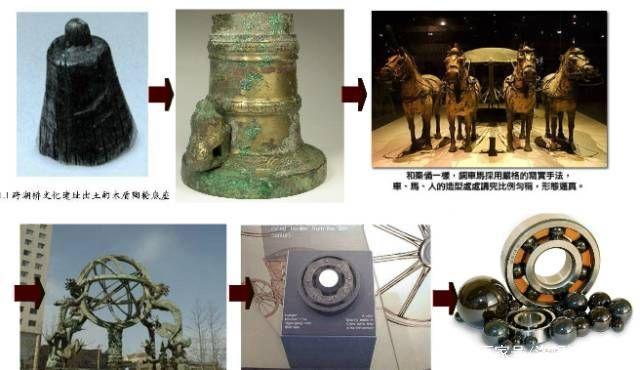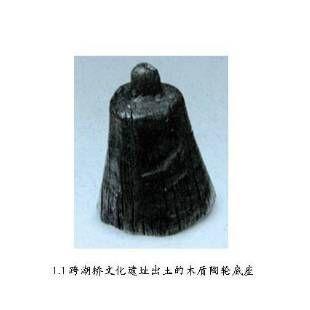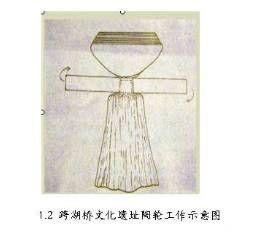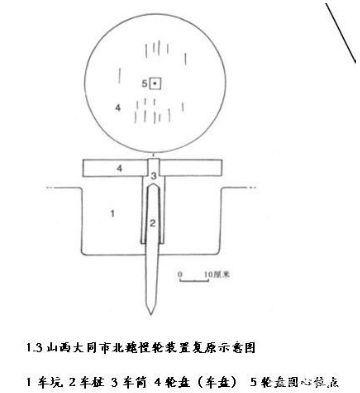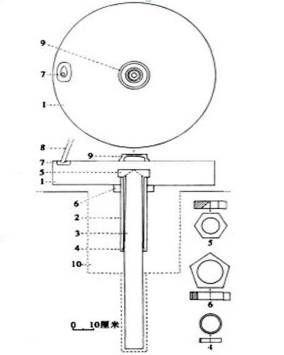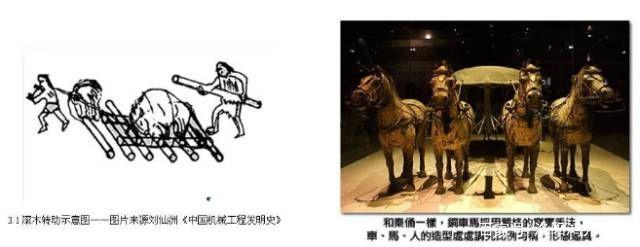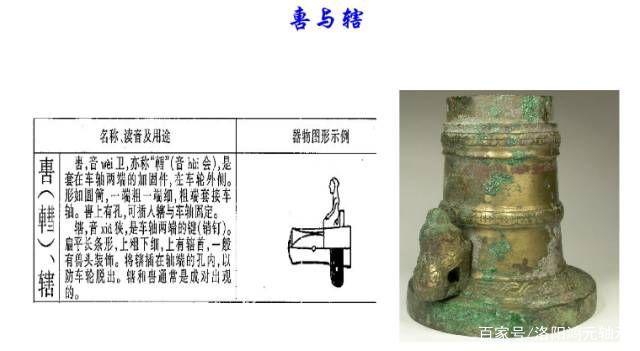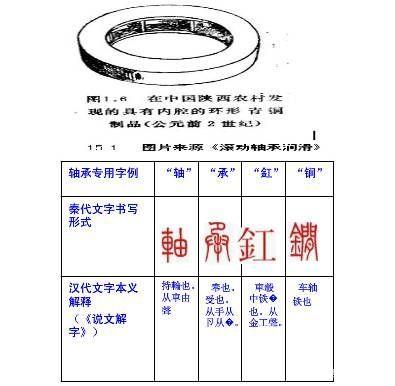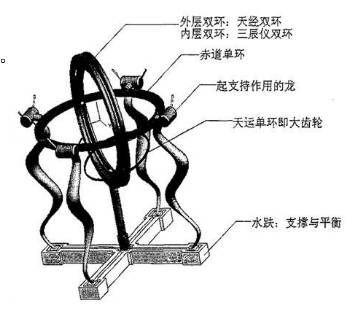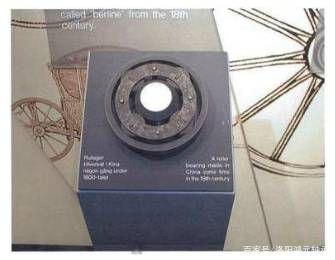
The bearing is the part supporting the shaft in the machinery, and the shaft can rotate on the bearing. China is one of the earliest countries in the world to invent rolling bearings. In ancient Chinese books, the structure of axle bearings has long been recorded."
The development history of Bearing in China
Eight thousand years ago, slow-wheel pottery appeared in China
A potter's wheel is a disc with an upright rotating shaft. The mixed clay or rough clay is placed in the center of the wheel to make the wheel turn, while the clay is shaped by hand or polished with a tool. Pottery wheel on its rotation speed is divided into fast wheel and slow wheel, of course, the fast wheel is developed on the basis of the slow wheel. According to the latest archaeological records, the slow wheel was born, or evolved, 8,000 years ago. In March 2010, the wooden pottery wheel base was found at the Quahuqiao Cultural site, which proved that the pottery wheel technology in China was more than 2000 years earlier than that in western Asia. That is to say, China began to use bearings, or the principle of using bearings, earlier than western Asia.
The wooden pottery wheel base is like a trapezoidal platform, and there is a small raised cylinder in the center of the platform, which is the shaft for the pottery wheel. If a turntable is made and placed on the wooden pottery wheel base, a complete pottery wheel is restored. After the pottery wheel is made, the wet pottery embryo is placed on the rotary plate and carefully aligned. The rotary plate is rotated with one hand and the tire body to be repaired is contacted with wood, bone or stone tools with the other hand. After several rotations, the desired circular string pattern can be left on the tire body. As mentioned above, the turntable is involved here, and there is a shaft to support, which is the prototype of the bearing.
The structure of the pottery wheel is shown in the figure below:
The picture below is the restoration of the fast wheel, which is based on the fast wheel in tang Dynasty. It should be much more advanced than the original fast wheel, but the principle remains the same, except that the material is changed from wood to iron.
The picture below is the restoration of the fast wheel, which is based on the fast wheel in tang Dynasty. It should be much more advanced than the original fast wheel, but the principle remains the same, except that the material is changed from wood to iron.
Regulus era, the legend of the car
The Book of Songs records the lubrication of bearings
Lubrication of bearings is recorded in the Book of Songs about 1100-600 BC. The appearance of plain bearings put forward the need for lubrication or promoted the development of tribology. It is now known that lubrication is commonly used in ancient cars, but the emergence of lubrication is far less obvious than the emergence of cars. Therefore, it is very difficult to discuss exactly the time of the emergence of lubrication. Through browsing and searching for materials, the earliest records about lubrication are found in the Book of Songs. The Book of Songs is the earliest collection of poems in China. Therefore, the poem originated from the early Zhou Dynasty to the middle spring and Autumn Period, that is, from the 11th century BC to the 6th century BC. In the explanation of the hook of "fen spring" of the Book of Songs, the hook of "fat and hook, on the hook of" T "and" no harm "is explained as" axle end key "in ancient times. Used in ancient cars, it is equivalent to what we now call a pin, through the shaft end, can be the wheel "control" live, so that the car wheel axle fixed; and "grease" of course is a lubricant, "return" is to go home, "mai" is fast. With grease, the axle lubrication, at the shaft end, check the pin, drive a long journey, send me home. hurry to the hometown wei ah! Don't let me feel guilty.
Qin and Han dynasty bearing with embryonic structure
Because of the zhou, qin, han dynasty on bearing technology invention and application of practice, to some of the important cultural texts in the qin and the han dynasties, has been recorded and often use contain the clear, mature writing about bearing special words, one of more common "axis" "water-analogy-simulation" "jian" and other words as well as the "axis" and so on the main verb (see said wen jie zi "). (Bearing Encyclopedia ID: ZCBK2014) The expression of modern Japanese characters on bearing is still "axially affected". In xiaozhuan characters of the Qin Dynasty, there are axis, operation, mace and other characters. From the original meaning of the Characters of the Han Dynasty, "axis" holds the wheel, "inherits" and receives the wheel, the iron on the "fabricated" hub and the iron on the "mace" axle, it is clear that the cultural concept and writing form of bearings have been established in the Qin and Han dynasties.
The Yuan Dynasty simplified instrument used cylindrical rolling support technology
Simplified instrument using cylindrical rolling support technique simplified instrument is derived from armillary sphere. The armillary meter is the news of the sky observation. The components of the armillary meter can be divided into supporting parts and moving parts. The supporting parts include water foundation, dragon column, tian Jing double ring, equatorial single ring, and water foundation center tian zhu, etc. The following figure vividly shows the main supporting and decorative parts of the armillary sphere.
The westernization movement of the late Qing Dynasty played a certain role in the development of China's machinery industry, bearing manufacturing also had an impact. In December 2002, the Chinese bearing technology investigation group went to Europe and found a set of Chinese Qing Dynasty bearings in the SKF bearing exhibition hall in Sweden. This is a set of roller bearings. The rings, cages and rollers are very similar to modern bearings. According to the product description, the bearings are "rolling bearings made in China sometime in the 19th century."


Post time: Mar-22-2022

